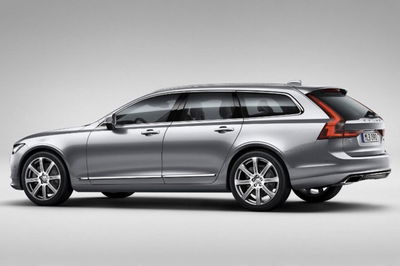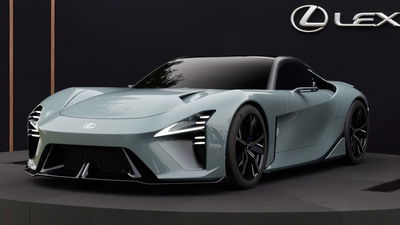6 Reasons Why Transmissions With Loads Of Gears Are Ridiculous

Am I the only one who thinks manufacturers are going a bit mad with their bazillon-speed transmissions? Fortunately the insanity is tied to automatics, which I’m sure most CTzens will agree are not the transmissions of choice for those who breathe tyre smoke and enjoy the smell of racing fuel. That said, modern automatics are pretty outstanding compared to the boxes of yesteryear, and I’m not one to completely write-off a potentially fun-to-drive vehicle just because the gearbox can choose its own ratios.
However, I don’t see one single reason why a freaking passenger car needs anything more than seven speeds. I get the concept - more gears provide a larger ratio spread, providing better acceleration and fuel economy. But when you take a closer look, simply adding more gears actually isn’t much of a solution. I suspect it’s become less about performance and more about one-upping the competition. I’m not buying into the hype, and here’s my decidedly non-engineering opinion as to why.
1. Added complexity means added cost

More cogs means more material, plain and simple. But you also have all the additional bits like clutches that need to be stuffed in there, and that, of course, adds more cost to the sticker price. And the added complexity also means more opportunity for failure, and I have no doubts if your spiffy nine-speed transmission decides to explode when you’re out of warranty, you’ll pay the equivalent of a decent used hot hatchback to get it rebuilt.
2. More gears means more weight

Even with clever packaging, all those components add weight to cars that already weigh far more than their predecessors. Weight is the enemy of performance; manufacturers should be finding ways to make cars lighter for better performance, not throwing in more gears to compensate for the excess weight that comes from, among other things, more gears.
There’s also the space required to use such transmissions, which is why you don’t find these abominations on small front-wheel drive cars. When they are used in a front-wheel drive application, the extra weight positively destroys handling balance in a layout that’s already nose-heavy.
I know, most of these uber-speed automatics are supposed to “learn” driving habits to provide less intrusive performance, but the fact still remains that the lightest press of the gas pedal usually results in a downshift. Even my 2004 Mazda 6 with a five-speed automatic annoys me on the hills around my home with the way it instantly drops to fourth at the mere suggestion of an incline at highway speed.
It doesn’t take an engineering degree to understand that the more parts move, the more wear they’re subjected to. Think about that the next time you’re in stop-and-go traffic with a hyperactive automatic that shifts 10 times in the span of one city block.
4. Fuel economy gains are all hype

Fuel economy seems to be what most manufacturers tout as the advantage to such gearboxes, but it’s complete and utter rubbish. Most of these cars show perhaps a couple of miles per gallon advantage at best over older models with fewer ratios. That’s such a small difference that driving style, atmospheric conditions, even tyres can have a much larger effect on mileage.
Case in point: my 2002 Infiniti I35 with a 255bhp 3.5-litre V6 and four-speed automatic averaged 31 mpg on my recent road trip, and the vast majority of those miles were done at 70 mph or more. The new Chrysler 200 with its 295bhp V6 and nine-speed automatic advertises “up to” 32 mpg. Fail.
I won’t deny that tighter ratios help acceleration. That’s why my old Infiniti would be so much quicker with a six-speed auto as opposed to its four-speed, but that doesn’t mean nine gears will make it quicker still. Ask anyone who has a 21-speed mountain bike what gears they use the most - one through seven, then 14th and 21st. Translated to car speak, five reasonably close ratios with one or perhaps two tall gears for highway cruising will give the same acceleration as something with nearly double the gears. That’s why a new Mazda 6 with a six-speed auto is just as fast and efficient as a new Chrysler 200 with a four-cylinder, despite the Chrysler having three more gears.
6. CVTs are the true performance automatics of the future

Manufacturers are basically trying to make conventional gearboxes work like a continuously variable transmission. I know CVT is a bad word among enthusiasts, and their less-than-stellar track record for reliability is a valid reason for that. But my friends, CVTs have epic performance potential. Holding an engine in its sweet spot for all of eternity is what every racer dreams of. On the flip side, having an engine barely running so as to deliver awesome mileage with minimal emissions at speed is what every environmentalist dreams of. The CVT with its gearless belt can provide infinite gear ratios, making the dreams of both sides come true.
And if you doubt its performance applications, watch this video from the 1990s of the Williams team testing a CVT for F1 - something the FIA shut down in a hurry because of its potential for complete domination.
I know, people say it just doesn’t feel or sound natural to not have an engine going up and down in RPM. There’s something to be said for the aesthetics and art of driving, but as a petrolhead I tend to place performance over panache. If the CVT seems unnatural, well, get used to it because it can be epic. There will always be cars with manual transmissions to enjoy the art of driving, but for just going fast, let me put it this way: you can either wait for VTEC to kick in, or it can always be kicked in. CVT yo - how can that be a bad thing?














Comments
Koenigsegg Regera be like: Don’t have that problem. Buy me!!
Really? Bashing on DCTs and normal automatics, where you could shift manually (in most cars), for shifting gears like you dont’t want it? And then hyping that CVT bullshit where you hear constantly the same monotonous sound? Otherwise yes, 9-speed auto is quite useless. Here in europe 7speed automatics have the advantage of a better gear ratio for Highways. That is also the reason I drive an auto. If the manual had a 7th gear with the same ratio I would take it. But who wants do drive on the Highway with constantly 4k rpm.
“You could shift manually”, you mean push that lever and wait a full second or more for a gear change? DCTs are great, but they are costly and weight a lot.
I don’t know how you drive or where, but I’ve never seen a manual at 4000 rpm on highway, except if you’re going a 150 km/h. At 120 i’m at 3100 rpm and my final drive is quite short.
CVT dont provide infinite gear ratios obviously that’s impossible in real life. For example the CVT in a 5th gen Legacy (Liberty in some areas) has a gear ratio spread 3.525-0.558 according to the factory service manual
Even though technically you’re correct, you’re wrong about the cause. The real reason there’s not really an infinite number of ratios is because the servos have a minimum step size.In between 3.525 and 0.558 there’s an infinite number of possible ratio. That’s mathematics (number theory). Let’s say you take 3.525 and 3.524, then in between you have 3.5249, 3.5248, 3.5247,… And then in between each you have 3.52xx9, 3.52xx8, … And so on. Between two real number, there’s an infinite amount of real numbers.
True, they don’t have infinite gears, it only seems that way because they are Continuously Variable, instead of a set gear range, or whatever, like regular transmissions, there are just many ratios betwen the first, and last. Say you have that car shifted in “4yh gear,” it’s basically in a range that seems like 4th gear- which could be multiple gears. Those of us with cvt scooters, knows a cvt just feels like one long enguaging gear at times.
I’v actually wonders how a vehicle would act if it had a cvt as a transfercase.
Subaru CVT imitates a 6-speed auto and as far as I know you can only drive it in this mode. So basically its like driving a normal 6 speed auto where you can up and downshift manually too, except in reality its a CVT.
Put the gear lever out of “S” or “M”, you get a real CVT.
A few years back I think Yamaha had a Dakar motorcycle with a hydraulic oil driven front wheel. Why we don’t see that solution on road cars? Just like an electric motor can be installed right at the wheel, a hydraulic “motor” could be installed. I know that some trucks (examle: MAN) have these HydroDrive systems for the front axle. It’s aparently much lighter than a conventional differential.
Not a well researched article. Mostly assumptions. Not to mention you compare unrelated cars based on 1 sub assembly. Autos are meant to downshift on inclines, has something to do with that engine sweetspot you mentioned while praising CVT. Most manual cars need a downshift for tackling a hill(referring to normal use cars here, not high torque motors), so you would rather have them putting around underreved and underpowered than downshift because cogs are wearing?
One thing is sorely true, complexity and materials used make rebuilding/replacing the boxes a monetary nightmare, where you’d rather set the car on fire.
Cvt’s Basic idea is just To be like a variator used in automatic mopeds. I’m not personally that interested on those going To be used in cars. but yeah it has much potential.
Is no one going to mention the weird shape of a young coulthards head?
this article is backed up by no research or facts at all. it just represents the state of mind of an old man living in a country that lost his innovativ spirit years ago…
Thats pretty much what the author saidnit was going ro be.
This article does not seem to be well researched. First of all, automatics don’t scale with gear the same as any other transmission. Since those are planetary gearsets, each gear stage you add gives up to 3 more speed, compared to a normal manual which one stage = one gear.
Moreover, planetary gearset manufacturing are getting more and more advanced, which means lower cost and better quality (one reason being the investment put in it for geared turbofan).
Then, 9 speeds finally remove the need for what you thought was a “downshift” on your Mazda 6. Basically, it’s just the lockup clutch that disengages when accelerating on top ratios to give you more torque. It’s basically “slipping the clutch” (though here it causes no wear to any parts, since moving oil act as the transmission mean) to give you more torque.
Finally, I do think 9-speed automatics are used as selling point, but I think the real reason behind it has more to do with emissions restriction than fuel economy (though that’s an opinion and an unproven one, not a fact).
Oh and before being called a “silly american with auto”, I’m not from the US and I drive (and will as long as i can) manual.
Pagination